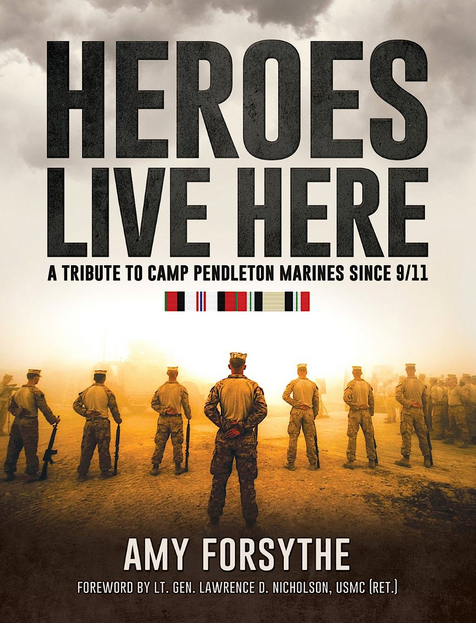Combat Cameraman promotes book at Camp Lejeune

Maj. Norman ‘Norm' Hatch, autographs a copy of War Shots: Norman Hatch and the U.S. Marine Corps Combat Cameramen of WWII.
Marine Corps Base Camp Lejeune
While others were down on the dirt in the prone, he was standing, sometimes with his back to the enemy hearing the mortars go over his head and bullets snap, a little too close to home. When others fixed bayonets to prepare for hand-to-hand combat from an oncoming Japanese charge, he positioned himself right in the middle of them and captured the first picture to ever show both sides of the war attacking.
Retired Marine photographer Maj. Norman ‘Norm’ Hatch, who served in World War II with the 2nd Marine Division came aboard Marine Corps Base Camp Lejeune with author Charles ‘Chip’ Jones to promote his new book, War Shots: Norman Hatch and the U.S. Marine Corps Combat Cameramen of WWII.
Hatch also took this time to talk to Marines about the importance of a cameraman in the battlefield and in politics.
“The question of being combat camera is no different than being a pilot, mortarman or a grunt,” said Hatch. “When the adrenaline kicks in so does all the training and we do our mission.”
However, Hatch’s and other photographer’s jobs required them to not only juggle the mission of being a rifleman, but a photographer as well, which at times required them to grab their cameras and capture images of war.
“You could be down low and firing at the enemy,” said Hatch. “But to get a good picture we stood up, sometimes with our backs to the enemy just so we can take that shot that lets the American people (know) what their sons, daughters, sisters, brothers mothers and fathers are doing.”
Along with capturing still images, Hatch and his unit also collected film footage.
“One video piece that stuck out to me was in Tarawa,” said Hatch. “It was a clip where I captured the Marines and (Japanese), both in fighting stances. Usually the enemy was hidden, but this was hand-to-hand fighting.”
The videos and photos they collected would go on to save the Marine Corps in its most troubling times.
“‘Bombs over Tokyo’, because of the footage we captured we were able to make that film and keep Congress from disbanding the Marine Corps,” said Hatch. “Lt. Col. Krulak thought of a film to show Congress to keep them from disbanding the Corps. He came to me and asked that I make a film. Thirty days later I took a projector and screen with the completed video.”
“Bombs over Tokyo,” depicted the air superiority of the United States, but then went into detail of how, without the Marine Corps, the islands would not have been captured and made into landing strips. The islands captured by the Corps were then used to help win the war, and with Hatch’s video and photos of the action that took place on the islands also saved the Marine Corps.
“The characters in the book and Norman Hatch are part of the Marine Corps story,” said Jones. “This book describes how important photography and video was. It showed the people back home what the troops were doing and helped secure a place in history for the Marine Corps.”
